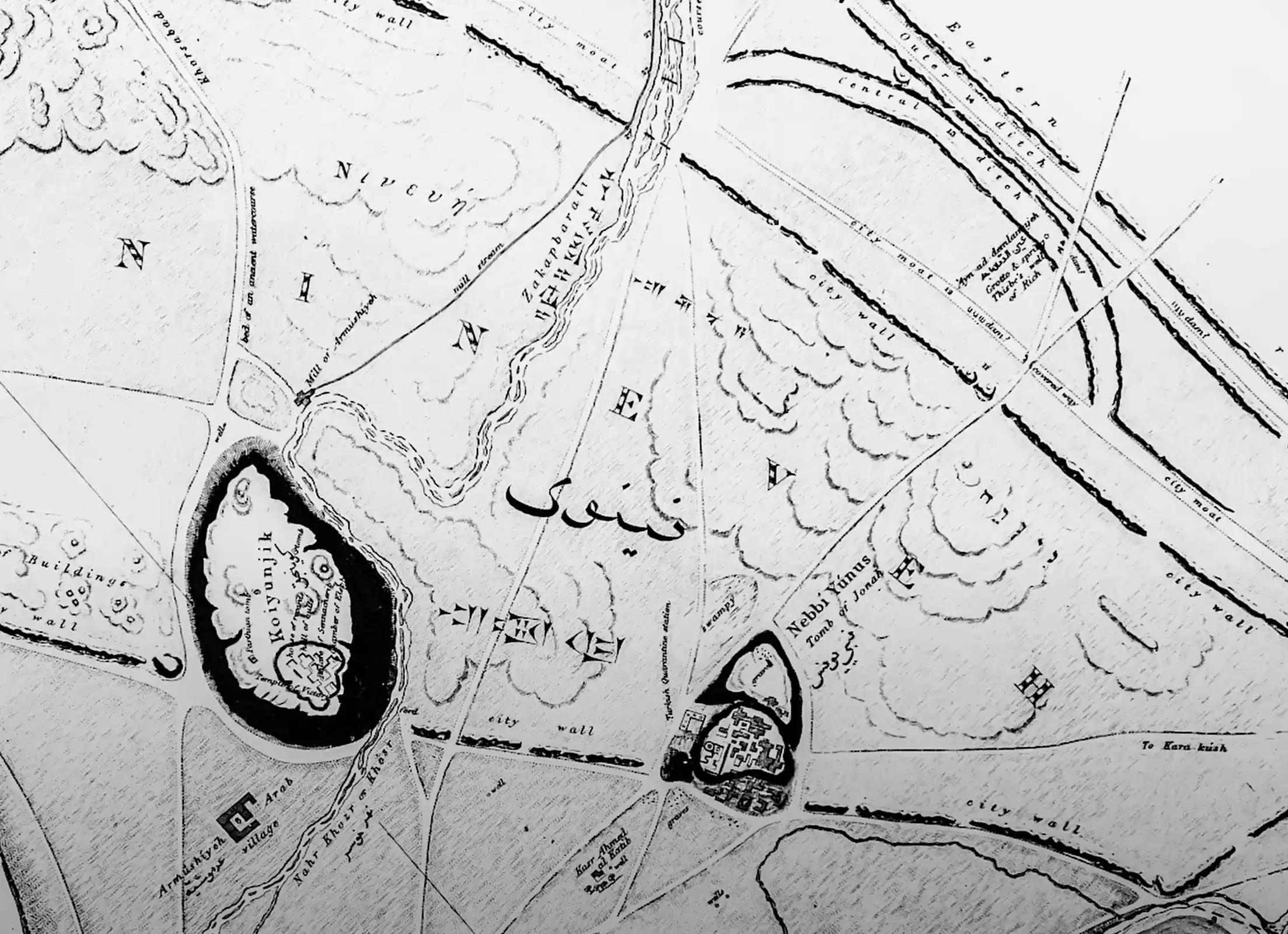
Nineveh, once the flourishing capital of the Assyrian Empire, stands as a testament to ancient Mesopotamian civilization. This city, immortalized in the Biblical narrative of Jonah, has fascinated historians and archaeologists alike. Its historical significance, coupled with its profound cultural and religious impact, makes Nineveh a subject of enduring interest.
The Rise of Nineveh
The ascent of Nineveh to prominence began in the early periods of Mesopotamian history. Originally a modest settlement, it evolved into the capital of the Assyrian Empire, a testament to its strategic importance and the might of Assyrian rulers.
Nineveh’s strategic location on the Tigris River facilitated not only trade but also political and military advancements. This period witnessed the construction of monumental structures, including the famed palace of King Sennacherib, renowned for its grandeur and artistic embellishments. These developments reflected the city’s growing influence and wealth.
The religious significance of Nineveh was equally notable. Temples dedicated to Assyrian gods dotted the landscape, symbolizing both religious devotion and political power. This chapter also delves into the city’s administrative and societal structures, highlighting the complexities of Assyrian governance and social hierarchies.
As Nineveh reached its zenith, it became a center for art, culture, and learning. The city’s library, reputed to have been established by King Ashurbanipal, housed a vast collection of cuneiform tablets, encompassing literature, scientific texts, and religious writings. This treasure trove of knowledge offers invaluable insights into ancient Mesopotamian life and thought.
The narrative of Jonah, a prophet in the Hebrew Bible, intersects with Nineveh’s history at its peak. According to the Biblical account, Jonah was sent to Nineveh to warn its inhabitants of impending divine wrath. This episode highlights Nineveh’s prominence in ancient narratives and its role as a symbol of repentance and divine mercy.
The Decline and Legacy of Nineveh
The decline of Nineveh, as swift as its rise, marked a significant chapter in the annals of history. The city, which had stood as a symbol of Assyrian power, faced its downfall in the late 7th century BCE. This decline was precipitated by a combination of internal strife, economic difficulties, and external pressures. The fall of Nineveh, captured by its enemies, signified the end of the Assyrian Empire and left an indelible mark on the historical landscape of the region.
The remnants of Nineveh, however, continued to echo through time. Its ruins, uncovered by archaeologists in the 19th century, revealed a wealth of information about Assyrian civilization. The discovery of the library of Ashurbanipal, with its thousands of clay tablets, provided unprecedented insights into the literary, scientific, and religious practices of the ancient Mesopotamians.
In contemporary times, Nineveh’s legacy persists in various cultural and academic fields. It serves as a vital source for understanding the complexities of ancient Mesopotamian societies. The city’s story, interwoven with Biblical narratives, continues to be a subject of religious and historical discourse.
The history of Nineveh, from its humble beginnings to its eventual decline, encapsulates the ebb and flow of ancient civilizations. Its contributions to art, culture, and governance are a testament to the ingenuity of the Assyrians. Nineveh’s legacy, preserved in both archaeological findings and historical texts, continues to inform and inspire current generations, offering a window into a world long past yet enduring in its impact.
References
- Albenda, P. (2018). “The Palace of Sennacherib at Nineveh,” Cambridge University Press.
- Reade, J.E. (2017). “Assyrian Sculpture,” Harvard University Press.
- A Tale of Two Cities: Nineveh and Babylon (Accessed 2024-01-14).
- Tell Nebi Yunus: The Ekal Mšarti of Nineveh (Accessed 2024-01-14).
- University of Chicago Press: Nineveh Studies (Accessed 2024-01-14).
- De Gruyter: Late Assyrian Empire Studies (Accessed 2024-01-14).
- The Ishtar Temple at Nineveh (Accessed 2024-01-14).
